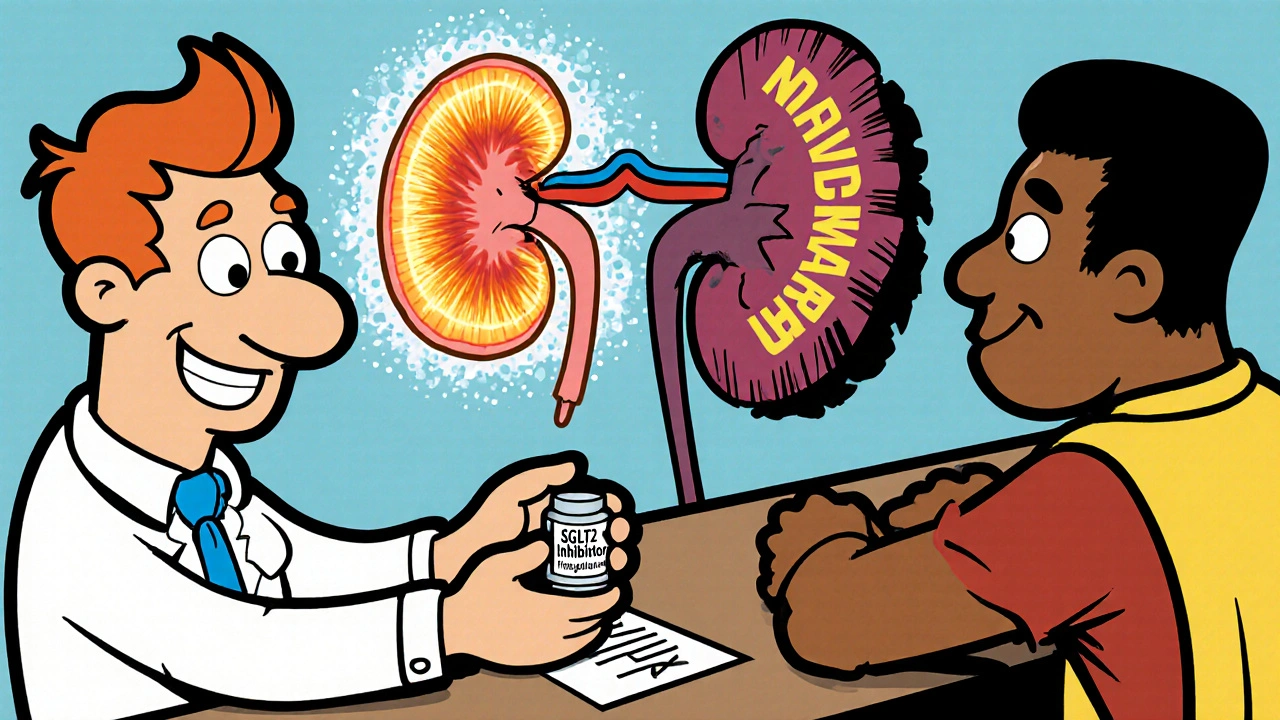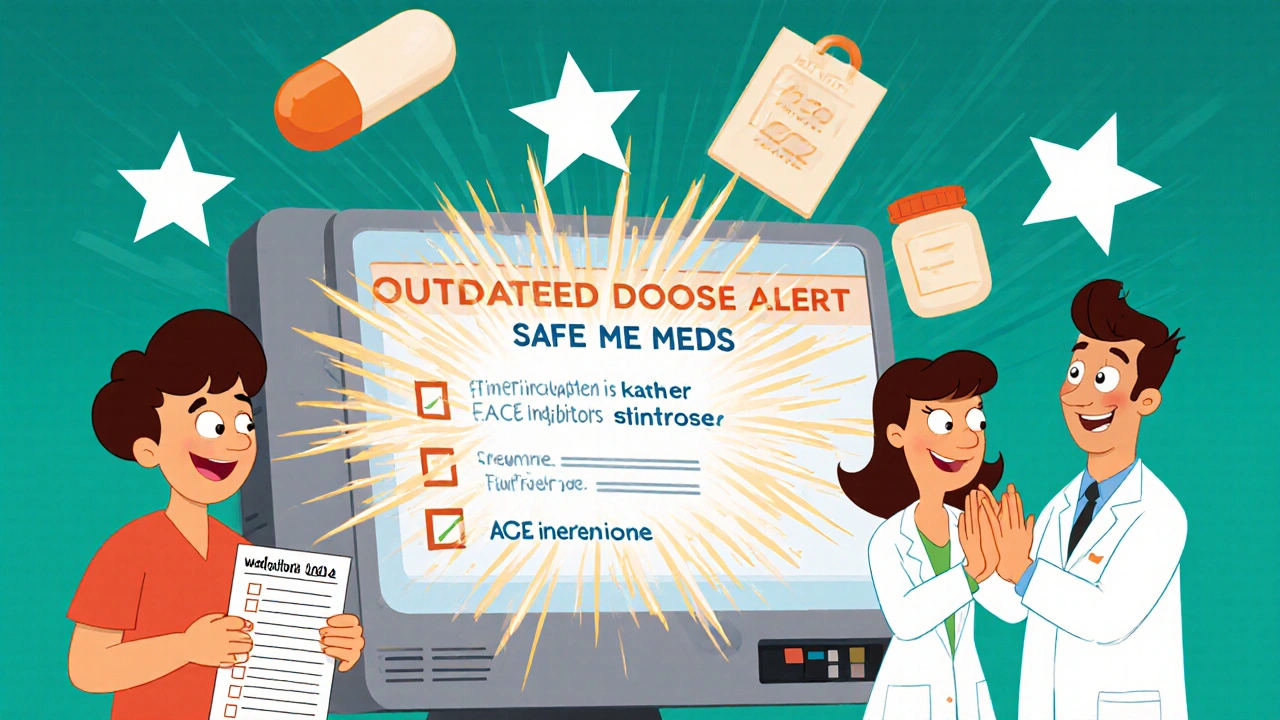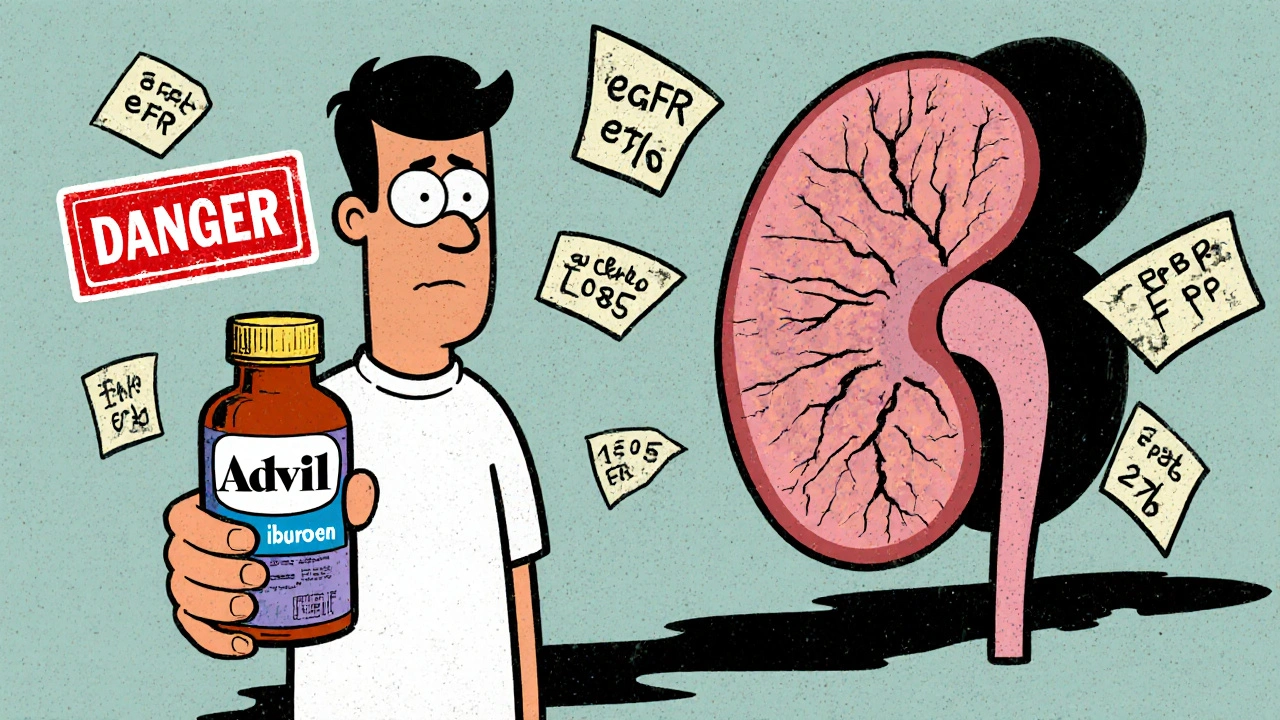When your kidneys aren’t working well, the meds you take can turn dangerous-even if they’re perfectly safe for someone else. A simple headache pill, a common antibiotic, or even a diabetes drug can cause serious harm if the dose isn’t adjusted. This isn’t just a theoretical risk. In the U.S., nearly 28% of hospitalizations for people with chronic kidney disease (CKD) are linked to medications that weren’t dosed properly. And for many, it’s avoidable.
Why Kidneys Matter More Than You Think
Your kidneys don’t just make urine. They filter your blood, removing waste and extra fluid. But they also clear most drugs out of your body. When kidney function drops, those drugs stick around longer. That means higher levels in your blood, which can lead to side effects, toxicity, or even organ damage. The key number doctors use is your eGFR-estimated glomerular filtration rate. It tells you how well your kidneys are filtering. A normal eGFR is above 90 mL/min/1.73 m². Once it drops below 60, you’re in stage 3 CKD. That’s when most medications need a closer look.Drugs That Can Hurt Your Kidneys (Nephrotoxins)
Some medications are outright risky for people with kidney disease. These are called nephrotoxins. They don’t just sit in your system-they actively damage kidney tissue.- NSAIDs like ibuprofen, naproxen, and celecoxib: These are the most common culprits. A 2024 patient report from the American Association of Kidney Patients described a man who took two Advil for a headache and saw his creatinine jump from 3.2 to 5.7 in under 48 hours. He ended up in the hospital with acute kidney injury.
- Sodium phosphate bowel prep: Used before colonoscopies, this can cause severe kidney damage in CKD patients. Polyethylene glycol (PEG) is the safe alternative.
- Aminoglycosides like gentamicin: Antibiotics that are hard on the kidneys. Even short courses can cause lasting damage if not dosed carefully.
- Contrast dye: Used in CT scans, this can trigger contrast-induced nephropathy. Hydration and sometimes pre-treatment with bicarbonate or N-acetylcysteine are used to reduce risk.
Dosing Adjustments: It’s Not One-Size-Fits-All
Most drugs are cleared by the kidneys. When kidney function drops, you need less of the drug-or less frequent doses.- Metformin: Used for type 2 diabetes, it’s safe until eGFR drops below 45. Below 30, it’s stopped completely. Why? Risk of lactic acidosis, a rare but deadly buildup of acid in the blood.
- Vancomycin: An antibiotic often used in hospitals. In normal kidneys, trough levels (the lowest level before the next dose) are kept between 15-20 mcg/mL. In CKD, that drops to 10-15 mcg/mL. Too high? Hearing loss. Too low? Infection doesn’t clear.
- Insulin: Often needed in CKD, but the body becomes more sensitive to it as kidney function declines. Doses often need to be lowered to avoid low blood sugar.
- Sulfonylureas (e.g., glipizide, glyburide): These can cause dangerous low blood sugar in people with kidney disease. They’re no longer first-choice for diabetes in CKD.

The Game-Changers: SGLT2 Inhibitors and Finerenone
Not all new kidney drugs are about avoiding harm-some actually protect your kidneys.- SGLT2 inhibitors like dapagliflozin and empagliflozin: These diabetes drugs are revolutionary. Unlike almost every other medication, they don’t need dose adjustments-even when eGFR drops below 25. They reduce the risk of kidney failure, heart attack, and death by up to 39% in people with CKD, regardless of whether they have diabetes. The 2024 KDIGO guidelines now recommend them for most CKD patients, even without diabetes.
- Finerenone: A newer drug approved specifically to protect kidneys in people with type 2 diabetes and albuminuria. It’s added on top of ACE inhibitors or ARBs when protein in the urine stays high. It lowers the risk of kidney failure by 23% and reduces heart-related deaths.
What About ACE Inhibitors and ARBs?
For years, doctors were afraid to use ACE inhibitors (like lisinopril) or ARBs (like losartan) in advanced CKD because they caused creatinine to rise. That rise used to mean “something’s wrong.” Now we know: it’s often a sign the drug is working. The 2024 KDIGO guidelines say: Use these drugs at the highest tolerated dose, even if eGFR is below 30. Why? Clinical trials that proved they protect the kidneys used full doses. Reducing them out of fear is suboptimal care. The goal isn’t to keep creatinine low-it’s to keep albuminuria (protein in urine) down. A 50% or greater reduction in albuminuria is linked to much slower kidney decline.What You Can Do Right Now
You don’t need to be a doctor to protect your kidneys from harmful meds.- Know your eGFR: Ask for it at every visit. Don’t just rely on “creatinine normal.”
- Use one pharmacy: A 2023 NIDDK study showed patients who used a single pharmacy had 42% fewer medication-related kidney injuries. Pharmacists can spot dangerous combinations.
- Check OTC meds: Read labels. Avoid NSAIDs. Use acetaminophen (Tylenol) for pain, but don’t exceed 3,000 mg/day.
- Ask before starting anything new: Even herbal supplements. Some, like aristolochic acid in certain traditional remedies, are known kidney poisons.
- Get a medication review: KDIGO recommends a full review every 3 months if you’re in stage 3-5 CKD. Ask your doctor or pharmacist to walk through every pill you take.

Why EHRs Often Fail You
You’d think computers would help. But a 2022 JAMA study found that nearly 24% of prescriptions for CKD patients were at unsafe doses because electronic health records didn’t alert doctors to the right adjustments. Many systems still use outdated formulas or don’t update eGFR in real time. Tools like Epocrates Renal Dosing are used by 63% of U.S. nephrologists, but most primary care doctors don’t use them. That gap is dangerous. If your doctor doesn’t check dosing, ask them to. Or bring your own list to your appointment.What’s Coming Next
The future of kidney-safe prescribing is smarter tools and better data. The FDA plans to update its guidance in 2026 using real-world data from millions of patient records. KDIGO is developing a standardized checklist for CKD medication safety, expected in mid-2026. And researchers are testing pharmacogenomics-using your genes to predict how you’ll react to certain drugs-especially in kidney disease. In the meantime, the best protection is awareness. Your kidneys don’t scream when they’re under stress. They whisper. A rising creatinine. A new rash. A sudden drop in energy. These are clues. Don’t ignore them.Can I take ibuprofen if I have kidney disease?
No, it’s not safe. Ibuprofen and other NSAIDs reduce blood flow to the kidneys, which can cause acute kidney injury-even in people with mild CKD. A single dose can trigger a dangerous spike in creatinine. Use acetaminophen (Tylenol) instead, but stay under 3,000 mg per day. Always check with your doctor before taking any pain reliever.
Is metformin safe for kidney disease?
Metformin is safe if your eGFR is above 45. Between 30 and 45, use it with caution and reduce the dose. Below 30, it’s no longer recommended due to the risk of lactic acidosis. Many doctors now switch patients to SGLT2 inhibitors or GLP-1 agonists, which are safer and even protect the kidneys.
Do I need to stop all my meds if my kidney function drops?
No. Many medications can be safely continued with dose adjustments. ACE inhibitors, ARBs, and SGLT2 inhibitors often become more important as kidney disease progresses. The goal isn’t to stop meds-it’s to adjust them. A medication review with your pharmacist or nephrologist every 3 months can help you stay on the right doses.
What’s the best painkiller for someone with kidney disease?
Acetaminophen (Tylenol) is the safest option for short-term pain relief. Avoid NSAIDs like ibuprofen, naproxen, and aspirin. For chronic pain, talk to your doctor about non-drug options like physical therapy or nerve blocks. Never exceed 3,000 mg of acetaminophen per day, even if you have no other liver issues.
Should I take SGLT2 inhibitors if I don’t have diabetes?
Yes-according to the 2024 KDIGO guidelines, SGLT2 inhibitors like dapagliflozin are now recommended for people with CKD even without diabetes, especially if you have protein in your urine. They reduce the risk of kidney failure and heart disease by nearly 40%. Your doctor can check if you’re a candidate.
How often should my kidney function be checked?
At least every 3 to 6 months if you have stage 3 or higher CKD. If you’re sick, hospitalized, or starting a new medication, check it sooner. Your eGFR and potassium levels should be tracked with every visit. Don’t wait for symptoms-kidney damage often has none until it’s advanced.


Matthew Mahar
I took ibuprofen for a headache last month and my creatinine jumped like a kangaroo on espresso. Thank god I read this before I ended up in the ER. My doctor just shrugged and said 'it's fine'-like, no bro, it's NOT fine. I'm now on Tylenol and drinking water like it's my job. Kidneys don't yell, they whisper… and I finally learned to listen.